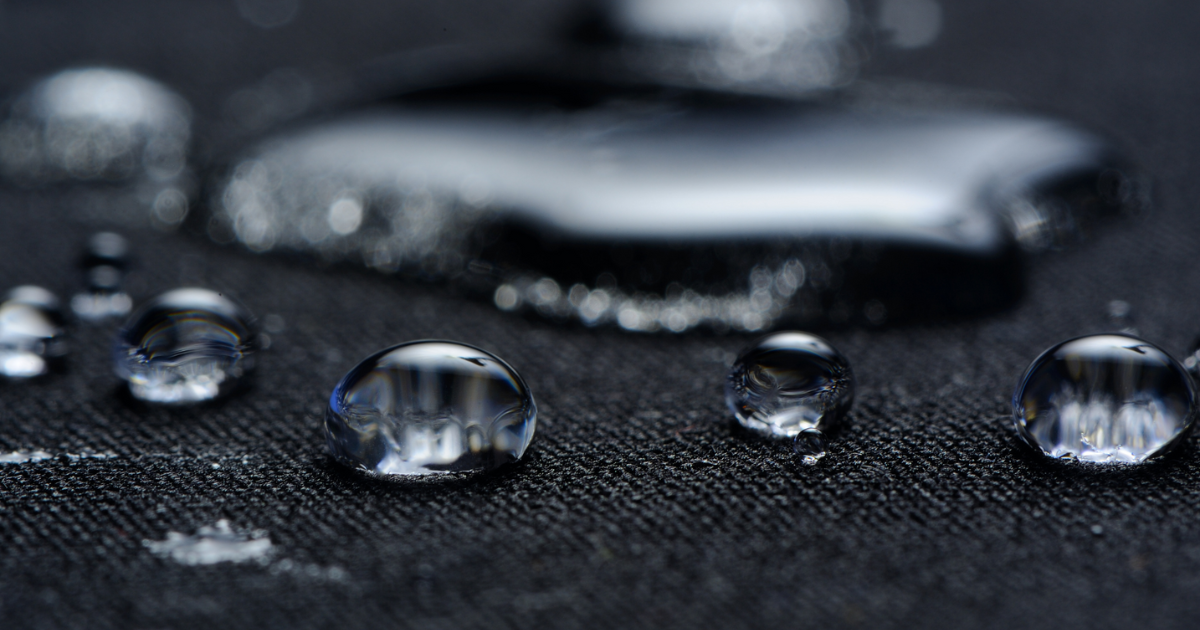DWR textile finishes: what are they and what's the difference?

When it comes to textile finishes, many outdoor enthusiasts and environmentalists are turning towards C0 DWR finishes as a more sustainable option. Unlike C8 and C6 DWR finishes, which are made from fluorinated chemicals, C0 finishes are made from non-fluorinated chemicals and are considered to be more environmentally friendly. In this article, we will take a closer look at the environmental benefits of C0 DWR finishes, and how they compare to C8 and C6 finishes.
One of the main environmental benefits of C0 DWR finishes is that they do not contain perfluorinated compounds (PFCs) which can be toxic and can persist in the environment for long periods of time. PFCs have been linked to a variety of health and environmental problems, including cancer, birth defects, and reproductive problems. C0 finishes, on the other hand, are made from non-fluorinated chemicals, which are considered to be much less toxic and less persistent in the environment.
Another benefit of C0 DWR finishes is that they are typically less durable than C8 and C6 finishes, which means they will need to be reapplied or replaced more frequently. While this may seem like a disadvantage at first glance, it actually has an environmental benefit. The more frequent application of a less toxic finish helps to reduce the overall environmental impact of the finish, as compared to a longer lasting alternative. Another environmental benefit of C0 DWR finishes is that they have a lower environmental footprint than C8 and C6 finishes. C0 finishes are typically made from non-toxic, biodegradable, or plant-based ingredients which are generally considered to be less harmful to the environment. In contrast, C8 and C6 finishes are often made from fluorinated chemicals that are not biodegradable, which can have a negative impact on the environment.
Moreover, C0 DWR finishes are also more sustainable than C8 and C6 finishes because they can be recycled or repurposed more easily. Fluorinated chemicals used in C8 and C6 finishes can be difficult to recycle or repurpose and often end up in landfills or the environment. C0 finishes, on the other hand, can be broken down and recycled more easily, making them a more sustainable option.
In conclusion, C0 DWR textile finishes offer a number of environmental benefits over C8 and C6 finishes. They are made from non-toxic, biodegradable, or plant-based ingredients and are less persistent in the environment. They also have a lower environmental footprint and can be recycled or repurposed more easily. Choosing a C0 finish is a great way to reduce the environmental impact of your textile products while still maintaining their performance. It's important to note that while C0 finishes may not be as durable as C8 and C6 finishes, they are still suitable for many applications and can be reapplied or replaced more frequently to maintain their effectiveness.
At Black Lab Brands, sustainability is a top priority, which is why we incorporate C0 DWR finishes in the fabrics used for our dog beds. So, when you choose Black Lab, you’re not just choosing quality; you’re choosing a greener future for your pup and the planet. Check out our Beast Dog Bed and Trailblazer Travel Bed to see how we’re combining performance with sustainability. Tougher. Greener. Cleaner.
Be Loyal.
2 comments
-
Martin on
Hey thanks for the all the info! Do you have more specific information on how and from what the C0 coating is created? I see info all around about this new coating but no details about the specifics of its eco-friendliness. Thanks!!




C0 DWR is a PFC-free (perfluorocarbon-free) finish made from non-fluorinated materials. It’s manufactured by applying these materials to fabrics to reduce surface tension, causing water to bead up and roll off. C0 is better than C6 and C8 because it’s more environmentally friendly and doesn’t contain harmful PFAS. However, it may not repel oil as effectively as C6 and C8. C0 also improves fabric tear strength compared to C6 and C8 treatments